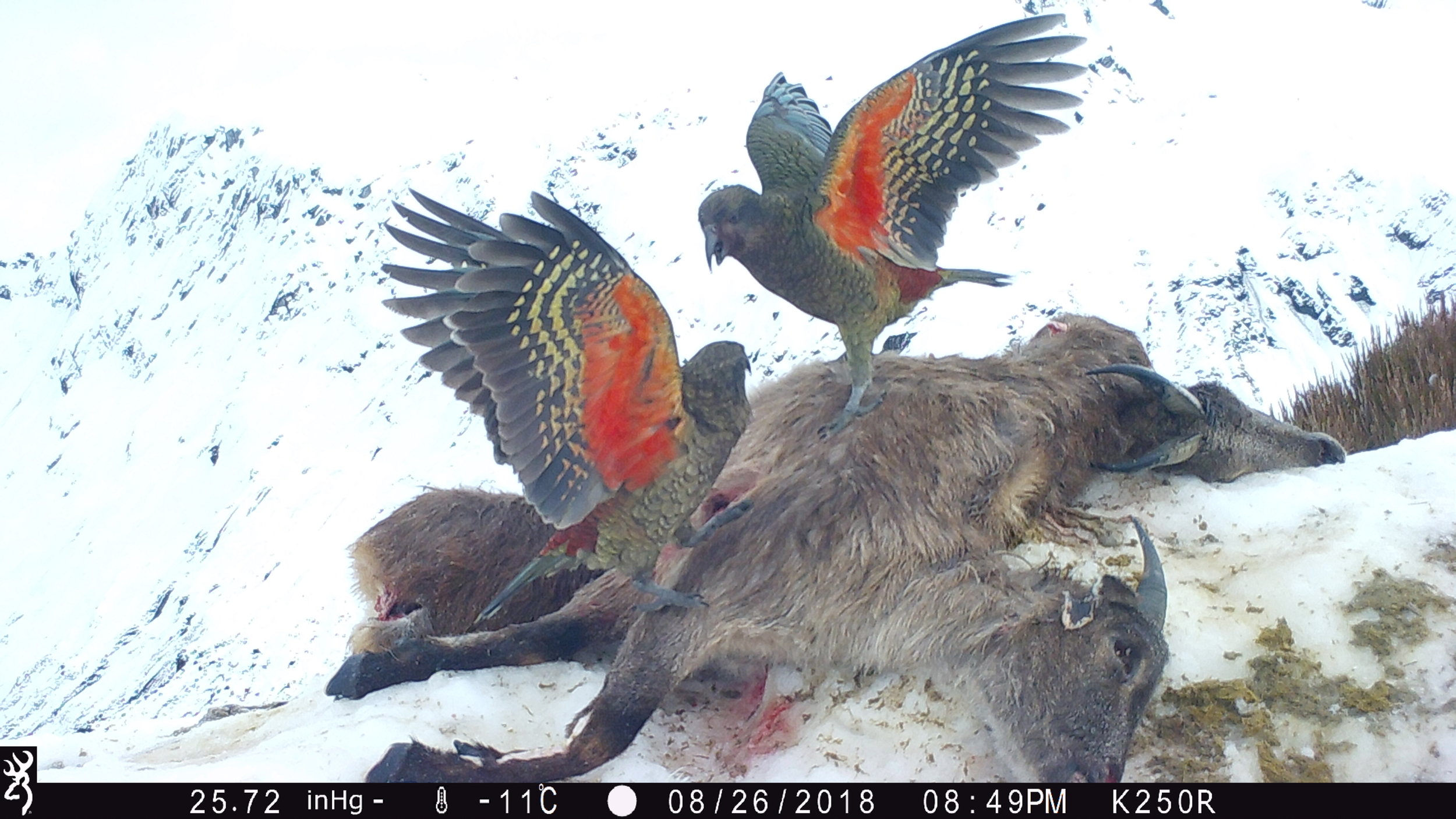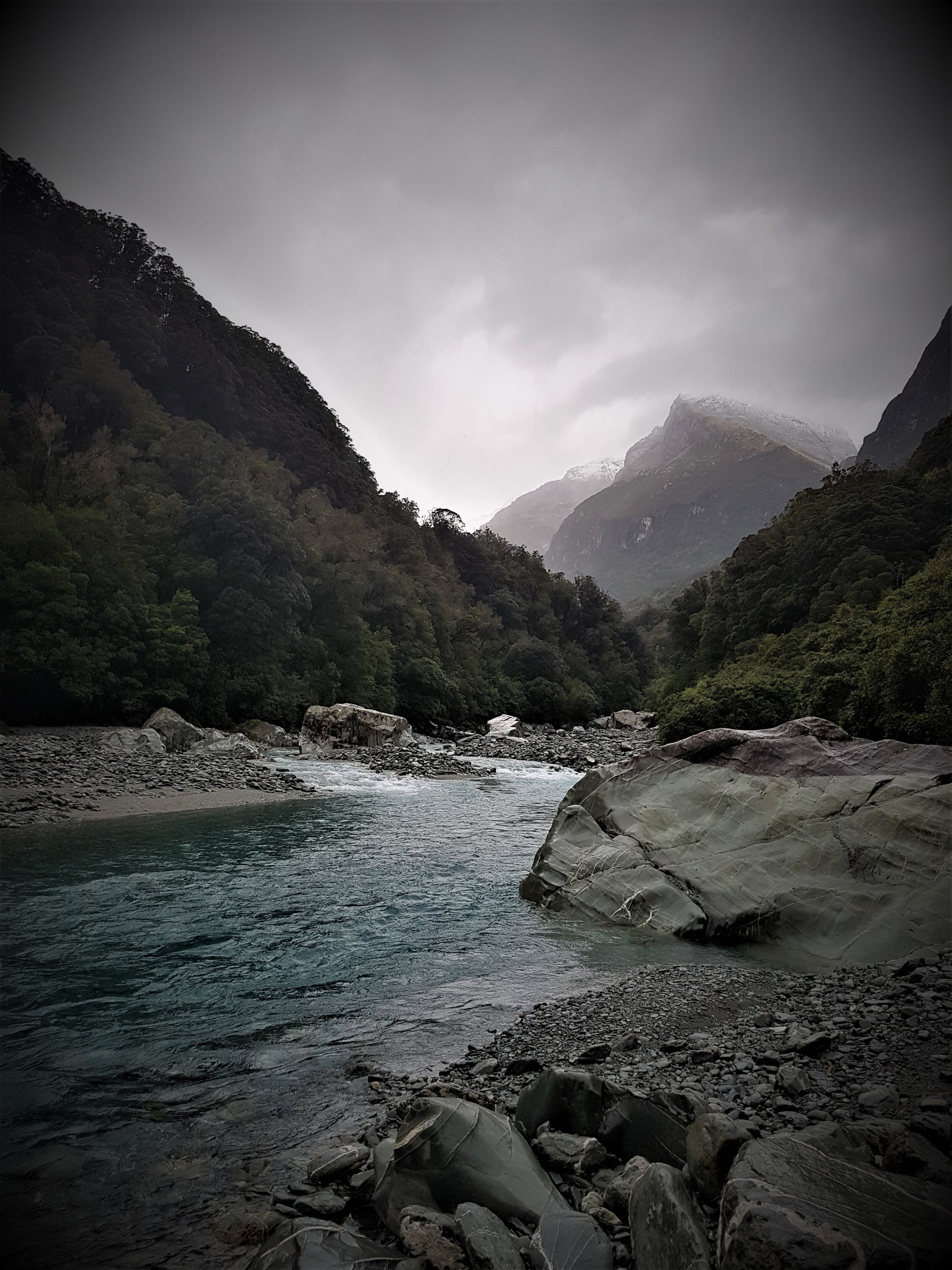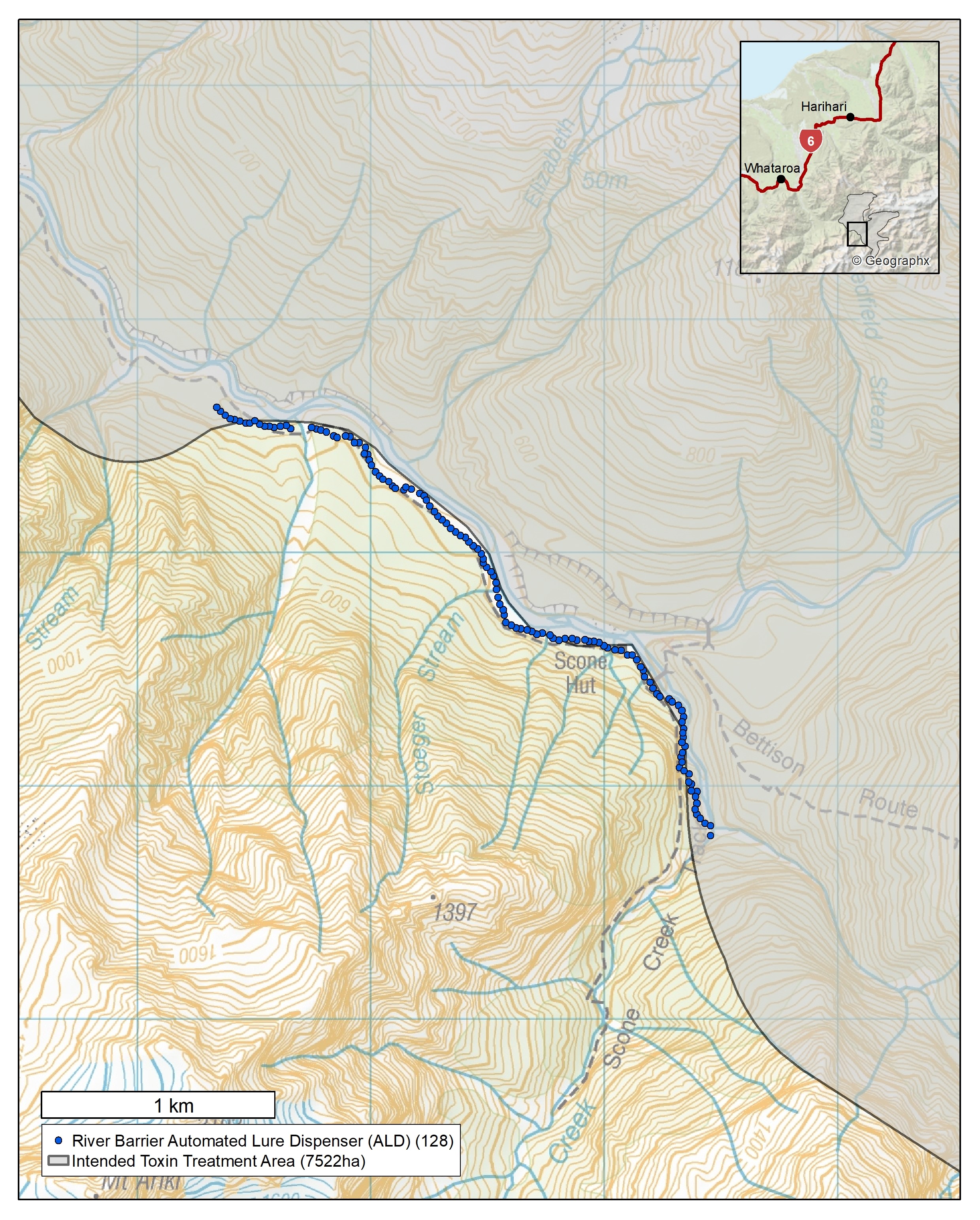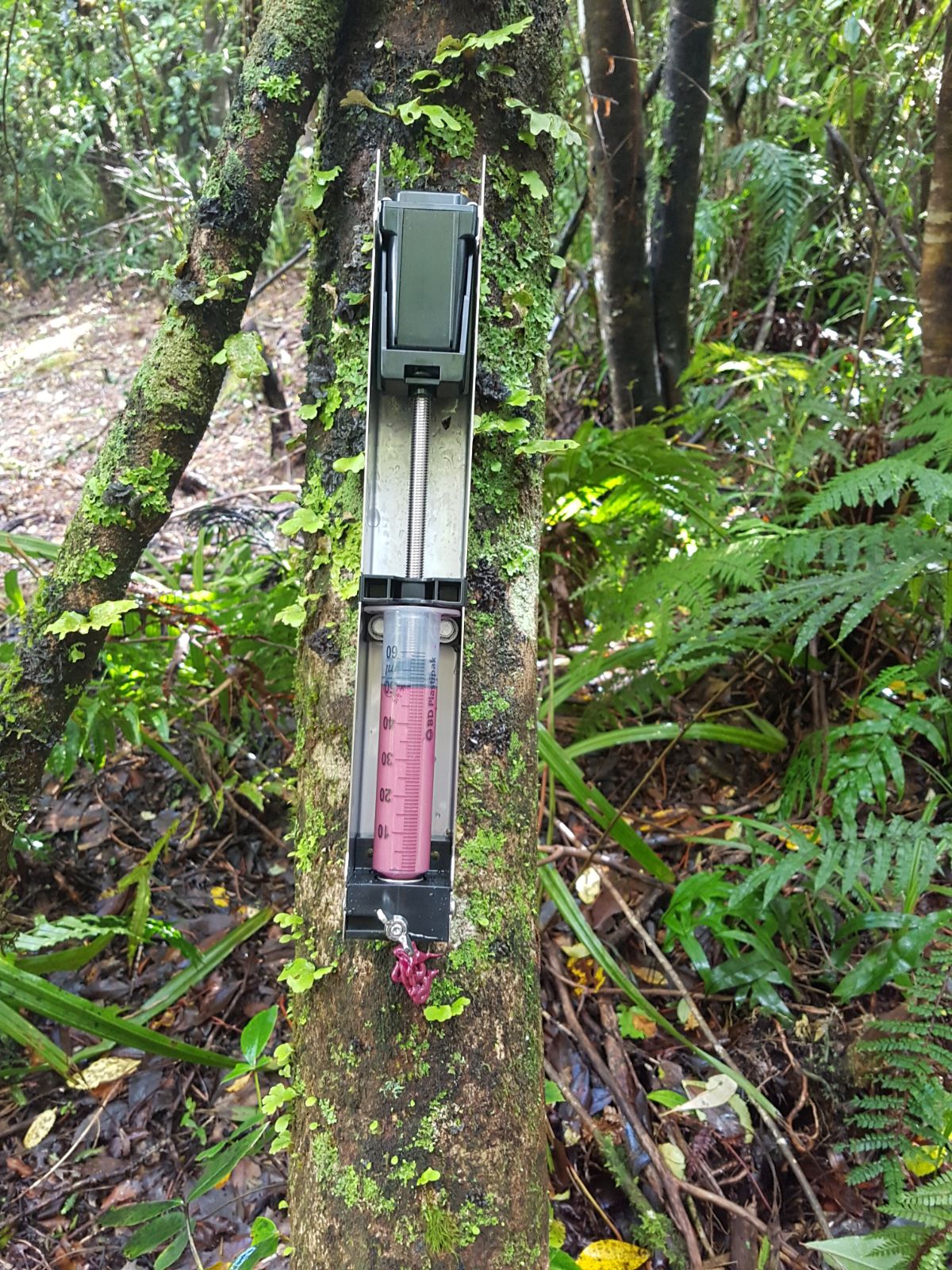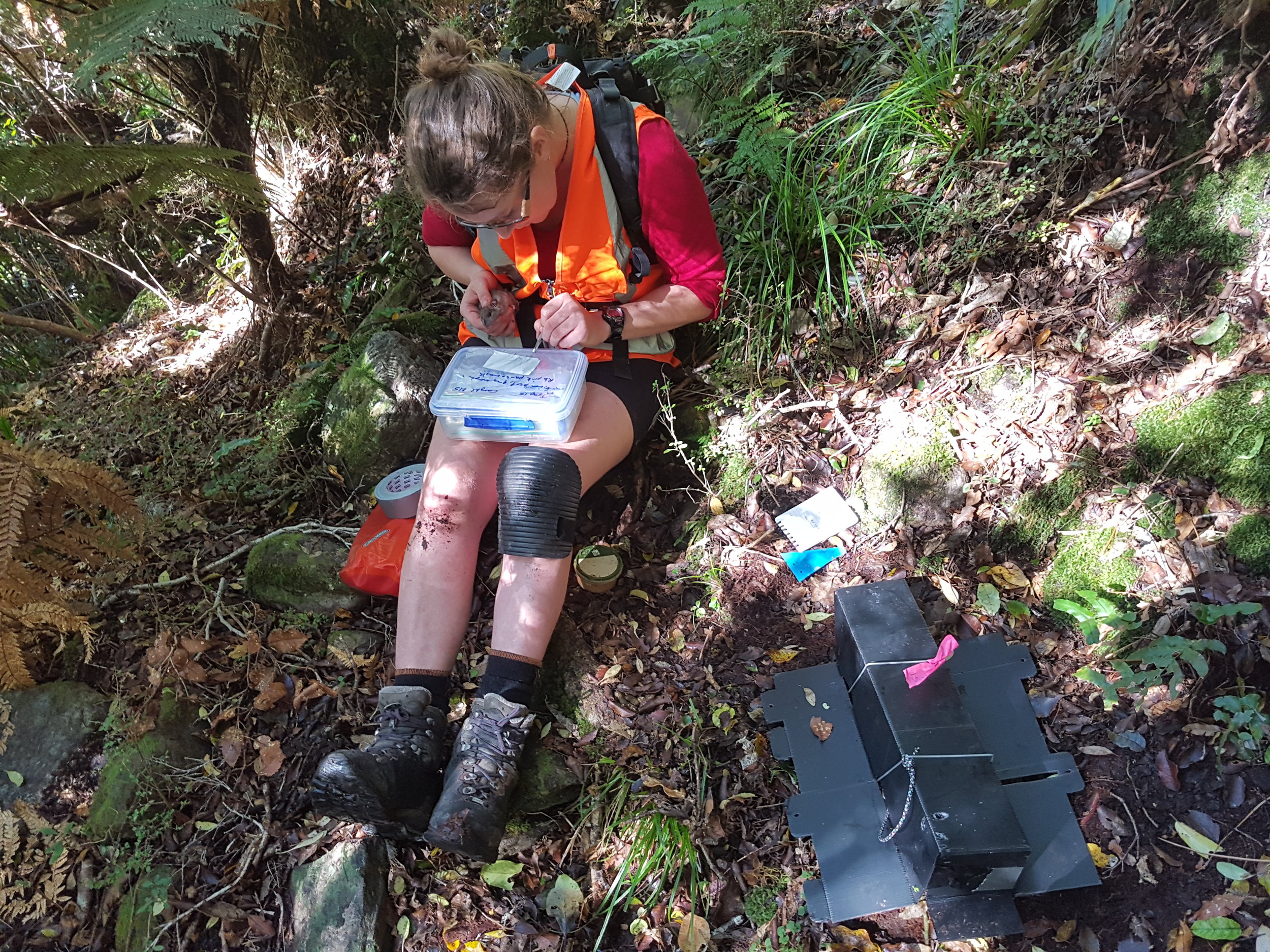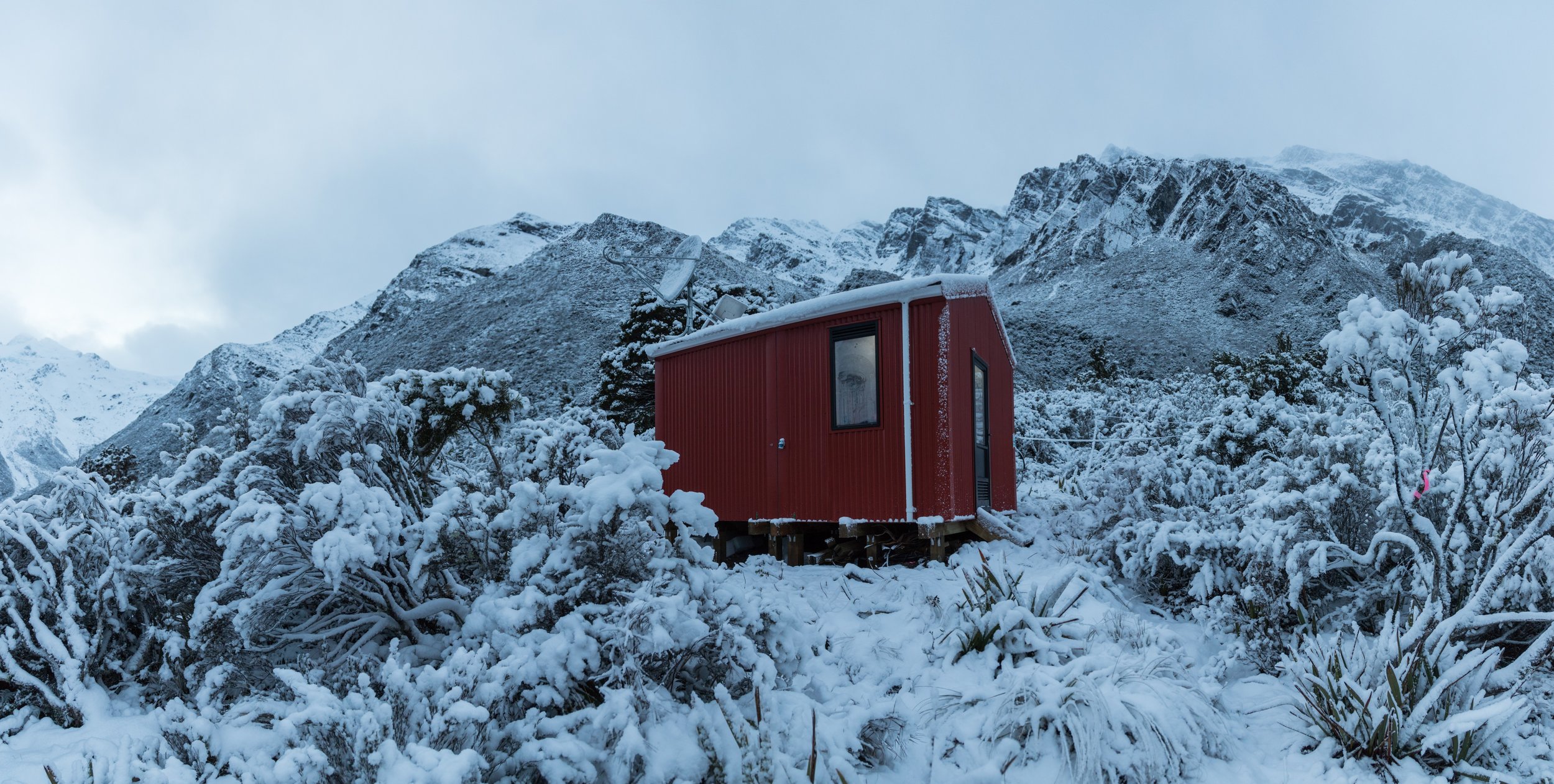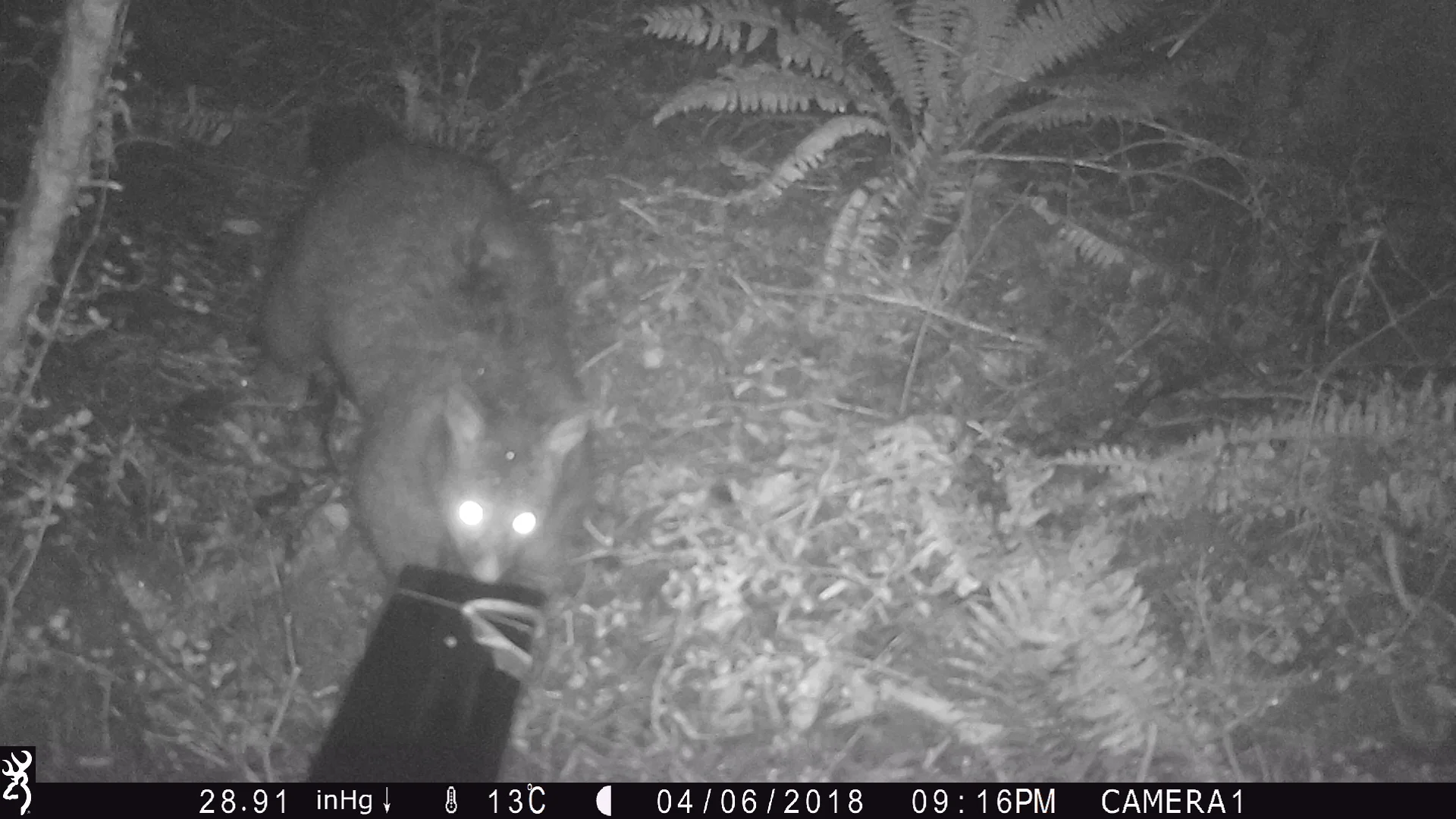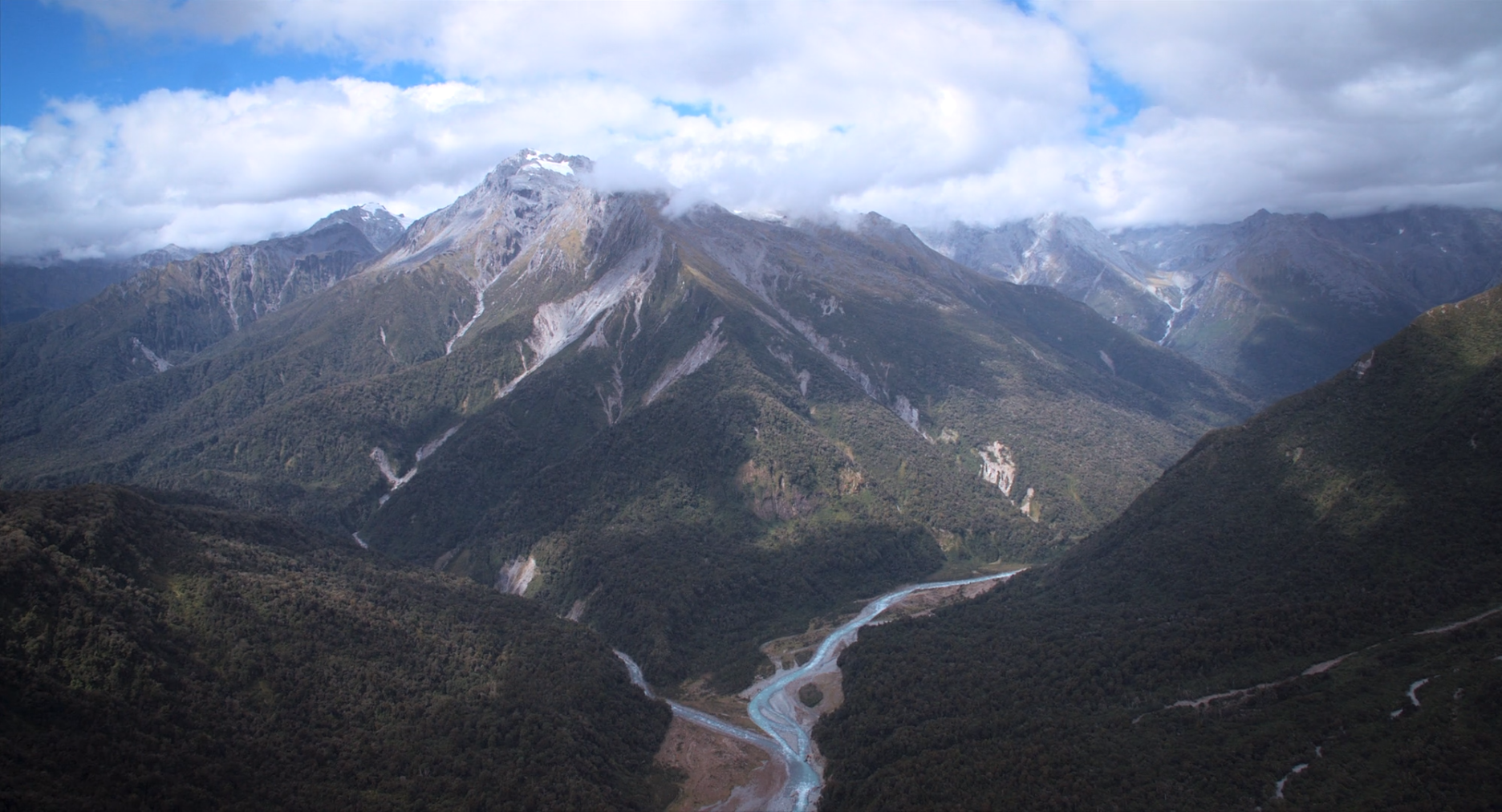In August this year we reported that the aerial predator removal phase of our programme of work in the Perth River valley had been delayed, because weather and snow conditions (experienced and forecast) had reduced our ability to fully implement the ‘1080 to Zero’ method to completely remove possums (and potentially rats). The aerial operation was originally scheduled to be carried out during winter 2018, but we now intend to carry out this work from March 2019.
The decision to delay this operation provided us with an opportunity to continue to develop and build confidence in strategies to (i) minimise potential risks to kea from the removal operation, and (ii) completely remove possums and rats, and prevent them re-establishing in the area.
Reducing risks to kea from the aerial predator removal operation
During the last two months we have been carrying out trials to assess the effectiveness of two measures to reduce the potential risk to kea from a ‘1080 to Zero’ operation.
The use of tahr carcasses as an alternative food source or ‘distraction’ from baits
In late June we began a trial to quantify the extent to which providing a small number of tahr carcasses as an alternative food source or ‘distraction’ could reduce consumption of toxic baits by kea. The carcasses of 21 tahr (shot with a high powered rifle) were initially placed at approximately 1km intervals along the upper boundary of the 1080 to Zero treatment zone, in order to ‘lure’ kea away from baits. Each carcass was placed as high in the alpine zone as snow and weather conditions would allow. Over subsequent weeks, we replaced any heavily scavenged carcasses to maintain their availability to kea as a food source.
Kea activity at each tahr carcass was monitored using trail cameras. These camera observations during the last four months have confirmed that the carcasses are highly attractive to kea, with 56% of the banded kea population within the research area (i.e. 31 out of 55 banded birds) appearing on camera at tahr sites. Based on a mark-recapture analysis, we estimate the population of kea visiting these tahr sites during this period to be 53 birds (42-79 birds, 95% C.I.).
Four kea feeding at a tahr site, including one of the birds in our banded population (second from left) and one from our radio-monitored population (second from right)
A minor scuffle between two kea at a tahr site
Six kea feeding at a tahr site
An additional small-scale trial, to be carried out from November 2018, will involve placing tahr in known kea locations (within the research area) with and without non-toxic prefeed baits (which do not contain repellent), and monitoring kea behaviour using trail cameras.
If these trials continue to show sufficient promise, we intend to place a small number of tahr carcasses outside the 1080 to Zero treatment zone, but still within the research area, to lure kea well away from toxic baits during the aerial predator removal operation.
The use of repellents to discourage kea from eating baits
The objective of this work is to quantify whether repellent laced bait could discourage kea from eating bait and, if so, devise a strategy to use repellents when the aerial predator removal operation is carried out.
Beginning in July, we applied non-toxic prefeed bait containing a repellent, anthraquinone, along a narrow section of the alpine boundary of the research area. We are currently analysing camera footage of kea behaviour, in order to understand whether the baits are having a repellent effect (i.e. if individual marked birds reduce their interaction with the baits, this would indicate that the repellent is working).
We are also working with a bait manufacturer to produce non-toxic baits containing anthraquinone at a range of concentrations, for trials with captive kea at Willowbank Wildlife Park. These trials are intended to determine the optimal concentration of anthraquinone required to guarantee that the birds experience a short-term feeling of illness, and learn to associate this with the baits. These trials are expected to begin in early November.
Assessing the effectiveness of rivers as natural barriers to possums, rats and stoats
In April this year we began a trial to determine the likely rate of invasion by rats across the river boundary, using a 3.2km long section of the Perth River as the trial site.
We established a network of 128 ZIP automated lure dispensers at 25m intervals along the true left side of the river, lured with mayonnaise that contains the bio-marker rhodamine B. To confirm uptake of the biomarker within the resident population, we undertook two rounds of trapping, each over multiple nights. The results indicated that 82% and then 90% of the trapped rats had ingested the bio-marker. Based on these results, it is very likely that we will be able to identify any rats that do manage to cross the river. We are also pleased to note that the mayonnaise, a new lure we are testing, appears to be both attractive and palatable to rats, possums and stoats.
To date 75 rats have been trapped on the true right side of the river, none of which have shown signs of rhodamine B, which typically shows up as a glowing ‘band’ in whiskers when observed under a fluorescence microscope.
We are now planning further trials in the Perth River research area to determine the rate of rat and possum invasion across different sections of the ‘river barrier’, particularly in summer conditions or where the rivers are braided, shallow, or slow-moving.
These trials will help us to design the layout of traps and devices required to reinforce the river barrier in a range of conditions.
Learning more about what we’re up against
Elevation of possums and rats
In March and April this year we carried out monitoring to assess the relative abundance of possums and rats in the Perth River research area.
Analysis of the results of this monitoring also provided us with some insights into how high into the alpine zone these species are present. This information is helping to inform the baiting strategy for the upcoming 1080 to Zero operation in the Perth Valley, and the extent of the detection network required to detect survivors and invaders.
We established a total of 12 monitoring lines throughout the 7,500ha treatment area, each 500m in length and positioned evenly across different vegetation types and elevations, between 290 and 1,600m. Lines were widely spaced, to ensure individual animals were unlikely to encounter devices on multiple lines. Motion-sensing cameras were deployed at 100m intervals along each line, for a total of 7 days.
The camera footage gathered during this trial showed us that possums are present above 1300m (i.e. in heavy snow) while rats have not yet been seen above 1100m.
We intend to repeat this monitoring in late summer 2018, prior to the aerial removal operation, to determine seasonal variations in the population and the distribution of possums and rats.
Developing a lean detection network for stoats
A network of 124 trail cameras were also installed throughout the research area over winter, at a density of 1 camera approximately every 35 hectares – we refer to this as a ‘lean network’. The camera sites are lured with mayonnaise, delivered using the ZIP automated lure dispenser.
Approximately one quarter of the camera sites have seen stoats. Half of the sightings occurred within the first 7 days of deployment. Approximately one-third of these cameras recorded multiple visitations (although it is unclear whether these represent repeat visits from individual stoats, or multiple stoats).
Further trials using marked stoats are proposed (either at Perth Valley or at our Bottle Rock peninsula field site), in order to observe their behaviour and better understand the likelihood that individual stoats will re-visit camera sites that provide a food ‘reward’ (e.g. food dispensed from an automated lure dispenser).
More information
For more information about this work, and about ZIP’s broader research and development programme, please visit the following two sections of our website:
Findings, which detail new developments and key areas of learning; and
Updates, which provide information about progress with our work programme.
We also recently published our 2017-18 Annual Report, which summarises our work over the previous year and highlights several key projects that relate to the Perth River valley programme.
If you have a question or feedback for the ZIP team, please contact us at info@zip.org.nz.




